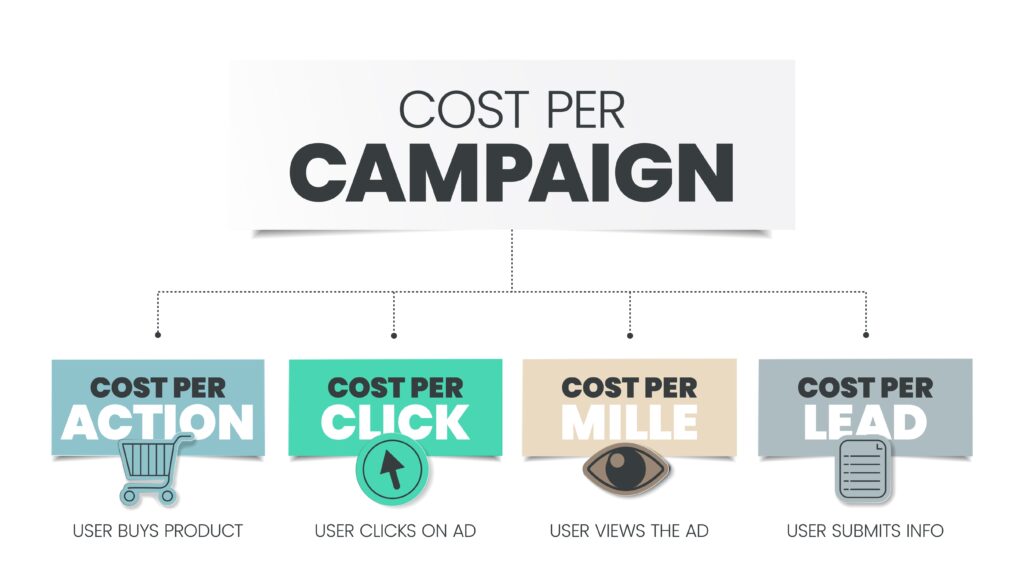
The metrics your business may use to measure the effectiveness or quality of a digital advertising strategy can vary. Cost Per Mille, or CPM, is a common tool, particularly if the digital advertising strategy focuses on brand awareness. CPM advertising focuses on garnering impressions. It looks at how many times an ad was shown to users. For digital advertising campaigns, the CPM can be a good indicator of how far your campaign reached. The deceptive simplicity of CPM also makes it a calculation that needs to be understood and correctly interpreted by digital advertisers. Like many digital marketing strategies, CPM is most effective when used in conjunction with a number of other resources. But for the purposes of this article, we will give an overview of what CPM is, how to calculate CPM, and how it can be leveraged in your digital advertising strategy to greater success.
What Is CPM in Digital Advertising?
Cost Per Mille represents the cost an advertiser will pay for every 1000 impressions their ad receives during the ad campaign. It’s really just a fancy “business” term for cost per thousand impressions. In more specific terms, CPM determines how much your business will pay every time a web browser loads or shows your advertisement, calculated in the thousands. In its description of the term, Outbrain reports that an average Google Display Ad has a CPM of $3.12, meaning your business would pay $3.12 for every thousand unique impressions Google displays your ad through its browser to users on the other end.
How Is CPM Calculated?
The straightforward mathematical formula for calculating cost per mille is the following:
TOTAL COST OF DIGITAL ADVERTISING CAMPAIGN divided by IMPRESSIONS RECEIVED BY CAMPAIGN multiplied by 1000.
For example, your business spent $10,000 on an advertising campaign. Your analytics reported that this campaign awarded you 6,000,000 impressions. Dividing 10,000 by 6,000,000 would give you 0.00167. Multiply this number by 1000, and you would get your CPM of $1.67. As this number is well below the reported Google Display Ad average of $3.12, your business’ campaign was extremely successful, spending only $1.67 for every 1000 people your $10,000 digital advertising campaign reached.
In other words, Cost Per Mille is an excellent indicator of advertising efficiency.

Impressions For Digital Advertising
In the most simplest digital marketing terms, an impression is when a user opens an app or website and sees your business’ ad. This user does not have to interact with the ad or click on it. It’s possible that the user didn’t even read the ad, just that the ad was visible on-screen for more than one second. It is also possible that an impression can be counted multiple times by the same user. For example, if a user sees your ad, refreshes the page, and sees your ad again, this action could be recorded as two impressions.
Thus, it is important to distinguish between impressions, reach, and page views when analyzing the effectiveness of a digital ad campaign. Reach refers to the total number of unique users who see your content. One of the earliest experiences with reach was creating my first Facebook business page many years ago. Every time I would make a post, there would be a little number at the bottom telling me how many people the post reached. Impressions, on the other hand, refer to how many times your content was displayed, regardless of whether it’s the same user, and whether the user clicks on it.
It is also important to note that impressions and page views are different. A page view occurs when a user loads a webpage. Page views are useful in calculating CTR, or a page’s click-through rate, as page views count the amount of times unique users click through a page, whereas impressions only calculate the number of times a user is exposed to your digital ad or message.
Impression Data Captured By CPM
CPM advertising, therefore, is mostly based on impression data. When you use CPM to calculate the effectiveness of a digital advertising campaign, you are analyzing to see if the money you spent was rewarded with a high number of views. Generally speaking, the lower the dollar cost per mille and the higher number of impressions garnered, the more successful the digital advertising campaign. Impression data tells you how many times your ad was shown to users, which will help you understand how effective your ad was in terms of visibility and potential reach.
How CPM Helps Your Digital Advertising Strategy
The main benefit of CPM is to maximize your reach within a fixed budget. If you are using CPM as your key performance indicator, your goal is to ensure that your ad is seen by a wide audience. You are paying for impressions as opposed to clicks, engagement, or conversion. Impressions can be easily measured in Google Analytics, or any tool you use, and thus, CPM data can be used to test different variables such as audience segments, location, or A/B variables. Cost per mille is also seen as a more budget-friendly option because impressions can be more predictable and stable when managing digital ad spend.

Limitations of CPM
Because CPM measures impressions only, businesses looking for more action-driven data, such as user engagement, clicks, or conversions will find CPM too broad in its approach. CPM advertising data does not guarantee users will interact with your ad, and thus, cannot be used to measure the quality of your digital advertising messaging or the quality of the users that saw the ad.
Impression data, in this sense, can be inaccurate as there is no way for CPM data to discard bot traffic or duplicate impressions. It is important, then, for your business to ensure that the website, application, or platform you are releasing your digital advertising campaign on have safeguards in place to mitigate spam traffic.
For advertisers looking to drive direct responses or conversions, CPM would need to be used in conjunction with alternative marketing spends like Cost Per Click (CPC) or Cost Per Action (CPA). Google Ads employ CPC and CPA. Along with MGG Digital’s hybrid approach to search engine optimization and ad-spend, businesses can find a lot of helpful services at their fingertips. For more information on how MGG Digital uses all these marketing resources, click here.
How Impressions from CPM Help Your Overall Digital Marketing Strategy
Despite some of its limitations, incorporating impression data through a CPM metric can help you gauge the reach and visibility of your digital advertising campaigns. For brand awareness initiatives, cost per mille is a very helpful calculation to measure success.
Quite simply, if your goal is to expand your online visibility in a cost-effective manner, calculating the cost per mille for your advertising budget in relation to the number of impressions made will give you an accurate estimate to how successful you were in achieving your goal. A low CPM with high visibility signals that your ad is reaching the right audience efficiently.
Ultimately, CPM advertising serves as a helpful foundational metric to ensure that your campaign is delivering on meaningful results. CPM impression data can contribute to improved brand recognition, audience targeting, and long term success. When integrated into your overall digital advertising strategy, your business can find a balance between brand awareness and performance-driven goals.
